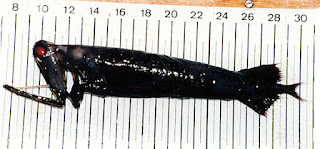It's that time of year again-- deer season. I live in a state where Deer hunting is a norm and a common topic of conversation and was actually surprised that I hadn't covered White-tailed Deer on this blog in the past!
The White-tailed Deer is well known throughout North and Central America, and they have even been introduced to parts of Europe and New Zealand. They are one of the most widely distributed mammals in the Americas, and it is no surprise that there are around
three dozen different recognized subspecies. They are incredibly adaptable, and live in a huge range of habitats. Grasslands, woodlands, subtropical forests, scrublands, and even suburban neighborhoods all play host to these Deer.
White-tailed Deer are named for the
undersides of their tails, which they raise when alarmed. Those tails communicate danger to one another, but is not their only form of communication. The Deer also produce a variety of sounds (Does and their Fawns bleat to find each other), and mark their territory using scent glands.
White-tailed Deer vary in size, depending on that territory and location. The Key West subspecies is the smallest (weighing around 80lbs), while Bucks in the northern United States and Canada can reach near 300lbs. Bucks are larger than Does, and also are the only sex to sport antlers, which are shed and regrown each year after the rutting season.
Rut takes place in the late fall, and during that times males will compete against one another for breeding rights. A Buck may reproduce with multiple Does each season, and has nothing more to do with the female or her eventual offspring after copulation. Does can have up to three fawns at a time, and
they hide their small, spotted offspring in the undergrowth while they go off to feed (mothers of multiples will hide each fawn separately). The young deer are weaned by the end of summer, but will often hang around with mom for another year or two.
Because White-tailed Deer live in so many places, they are able to eat many different kinds of plant life. Leaves, grasses, acorns, cacti, fruits, and mushrooms are all consumed by the species. They can also cause problems in farms, orchards, and gardens when they decide to go after corn and other crops.
Overall, White-tailed Deer are listed as being of Least Concern, though some of the subspecies (like the aforementioned Key West variety) are listed separately with their own conservation classification.
IUCN Status : Least Concern
Location : North and Central America, introduced to Europe and New Zealand
Size : Weight up to 300lbs (136kg)
Classification : Phylum : Chordata -- Class : Mammalia -- Order : Artiodactyla
Family : Cervidae -- Genus : Odocoileus -- Species : O. virginianus

 RSS Feed
RSS Feed Twitter
Twitter 10:00
10:00
 booker2o73lister58
booker2o73lister58





































